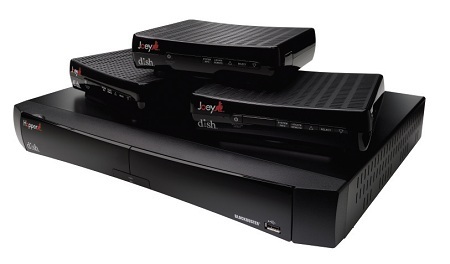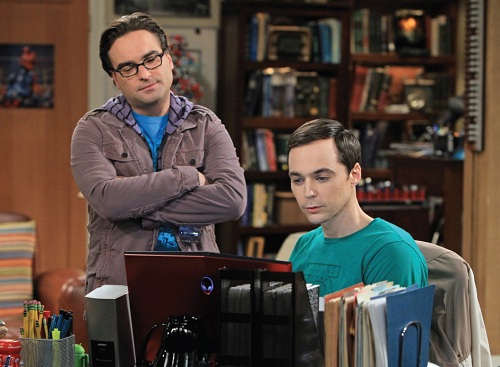The Indispensable DVR
ALEXANDRIA, VA.—CBS was not aware of it for three weeks, but in late October it discovered “The Big Bang Theory” had apparently finished the week of Oct. 1 as the second-highest viewed show in the nation—edging out “Sunday Night Football” on NBC. Even a year ago—for both technical and social reasons—such a scenario would have been highly unlikely.
Thanks to rapidly accelerating DVR deployment by viewers this season, “Theory” managed to pull in an additional 3 million viewers over the seven days (what Nielsen refers to as “Live +7 Day”), following its airdate and slide into the runner-up slot, behind only “NCIS” (also CBS). Leslie Moonves, CBS’s chief executive, has called this year a “tipping point” for broadcasting when it comes to changing viewer habits and, specifically, time shifting via DVR. According to Nielsen, nearly half of all TV homes (46 percent) now have at least one DVR.
Dish ‘Hopper’ Wins Round 1
ENGLEWOOD, COLO.—Dish Network began marketing a new DVR service called “Hopper” last spring, which can automatically delete commercials from primetime content—a move which prompted Fox and NBC Universal to take the satellite TV company to court. On Nov. 7, a federal judge in California rejected the networks’ bid for a preliminary injunction to temporarily halt the use of the Hopper’s AutoHop feature, prompting a planned appeal from Fox.

“We are gratified the court found the copies Dish makes for its AutoHop service constitute copyright infringement and breach the parties’ contract,” Fox said. “[But] we are disappointed the court erred in finding that Fox’s damages were not suitable for a preliminary injunction. We intend to appeal...”
The device creating all the fuss is the satellite provider’s Hopper Whole-Home HD DVR, which can zap commercial breaks automatically with one button (dubbed “AutoHop”). Dish has an estimated 14 million satellite subscribers and claims 45 percent of all network broadcast commercials are fast-forwarded anyway.
Vivek Khemka, Dish’s vice president of Product Management, said “AutoHop does not ‘delete’ commercials. They’re still in the video stream and can still be watched—even if AutoHop is enabled— by simply pressing ‘fast-forward’ or ‘rewind.’”
Get the TV Tech Newsletter
The professional video industry's #1 source for news, trends and product and tech information. Sign up below.
—John Merli
DVR BOOSTS ALL SHOWS
While +7 Day numbers don’t count in Nielsen ratings to help determine advertising rates (it’s based on Live +3 Day), a dramatic jump in DVR usage in this still-early TV season is giving a new lease on life to some broadcast entries that under-perform in overnight numbers. Yet growing DVR time-shifting is also goosing the alreadyhigh overnight ratings of some of the most popular shows on television, notably “Modern Family” (ABC) and “NCIS” (CBS).
“Fresh data from TiVo indicates every one of the networks has averaged more than 50 percent of viewing of their new shows being time-shifted,” said Greg De- Palma, vice president of Audience Insight for DVR pioneer TiVo. “Leading the pack is The CW with 74 percent. What’s happening is the younger skewing the network, the more time-shifting takes place, which makes sense.”
As far as the conventional wisdom that DVR viewers routinely zap through commercials, NBCU’s Alan Wurtzel, president of Research & Media Development, said something “counter-intuitive” may be happening. “People skipping commercials is actually going down—and in fact, about 40- to-45 percent [of DVR viewers] will watch a commercial. It’s ‘work’ for some viewers to avoid the commercials with [a remote], and some people just don’t want to bother. And some people actually like certain types of commercials,” Wurtzel said. (Others also have suggested viewers often forget they’re watching a recording.)
DELETING LINEAR
While the actual growth in DVR sales has slowed down, its usage has accelerated among viewers and is having a tremendous impact on traditional linear broadcasting, according to Wurtzel. “This is having all types of implications because for 50 years it’s been customary for a network to take a new program and put it behind a popular show that’s a lead-in—like we did this season with ‘Revolution’ [10 p.m. ET] on Monday night coming right after [ratings blockbuster] ‘The Voice.’
“But what’s interesting is half of ‘Revolution’s’ final rating is basically from [DVR playback]. I’ve always called the DVR a ‘frienemy’ because it can be disruptive. But on the other hand, a show like ‘Revolution’ is up against football [on ESPN] and other popular shows. So instead of making only one choice, a second show can get recorded,” Wurtzel said.
For ad purposes, a program’s measured audience only extends to Live + 3 Days, but Charles Kennedy, ABC’s senior vice president of Research, says “the true popularity of our shows isn’t fully known until Nielsen can report the Live +7 Day data, where we see the overall ranking of our programs change.”

DVR usage helped propel CBS’s “The Big Bang Theory” to the secondhighest viewed show in the nation the week of Oct. 1. David Cooperstein vice president/practice leader at Forrester Research agrees. “I do believe +7 Day may be required since it allows all shows to get a weekend of [DVR] viewing into their ratings, which will have to be measured in the long run to gauge true viewership,” he said.
Some new shows, like “Nashville” on ABC and “Chicago Fire” on NBC—which compete head to head—have so-so overnight numbers but have grown their audiences as much as 40 percent after Live +7 Day numbers come in. “The bottom line,” said Kennedy, “is more viewers are able to access ABC’s content over a longer window...”
FRIDAY NIGHT THEORY
While networks are hesitant to give away program strategies, some in the industry think it’s not coincidental that some shows which generally achieve low overnight ratings like newcomer “Grimm” on NBC and old timer “Fringe” on Fox both air on Friday night—which puts the weekend in play for advertiser-friendly Live +3 Day. Intentional or not, it seems to be working: Both shows have been known to add 35-40 percent to their overnight numbers after weekend DVR playbacks.
According to Will Somers, Fox’s senior vice president for Audience Intelligence & Research, “I can’t speak for our program scheduling, yet Friday night is something to be considered. But remember—there’s a lot of DVR-ing going on throughout the week. And we do look at the differences between +3 Day and + 7 Day ratings on a regular basis and the large majority of this time-shifting is happening within that 3-day window. But it’s incumbent upon the industry to [examine] this on a regular basis,” Somers said.
